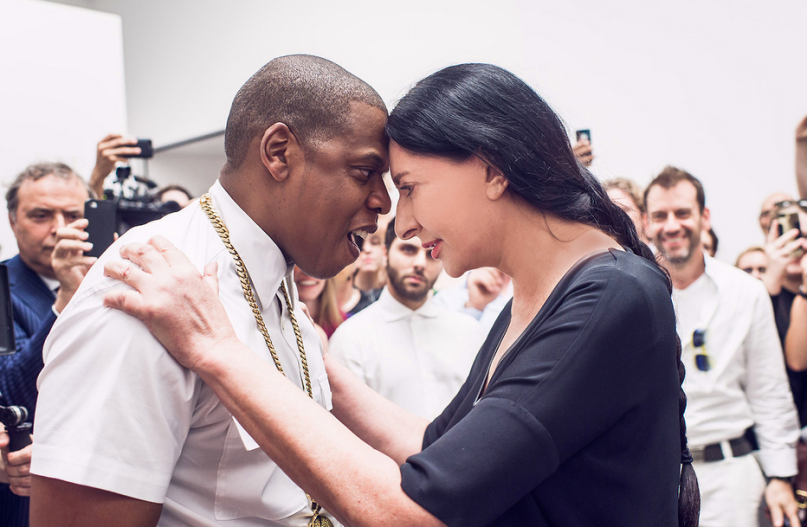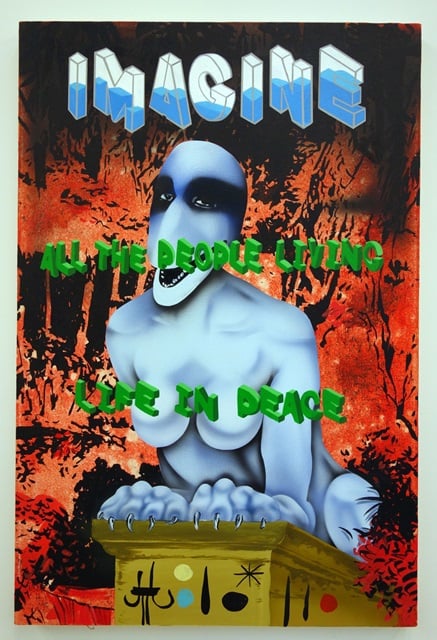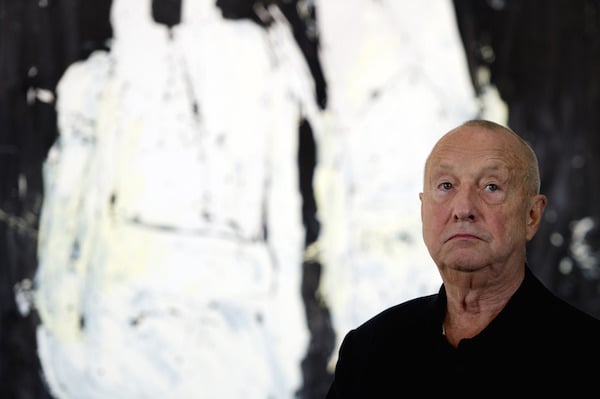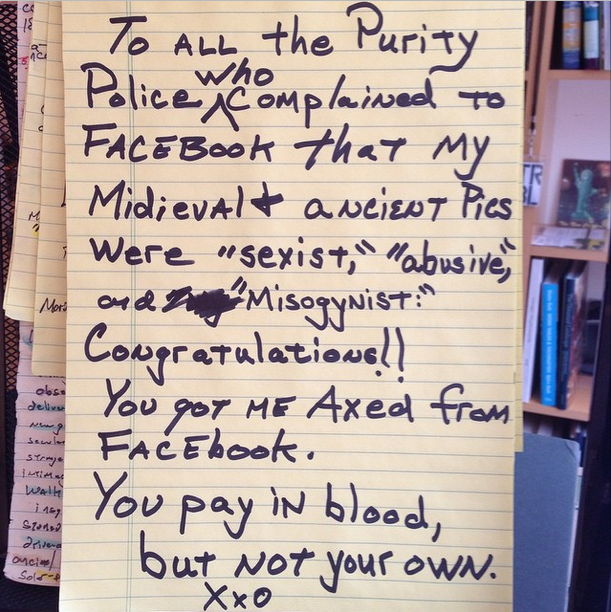People
8 of the Most Heated Art World Spats in Recent Memory
Loris Greaud, Marina Abramovic, and Jerry Saltz are among the pugilists.

Photo via Consequence of Sound.
Loris Greaud, Marina Abramovic, and Jerry Saltz are among the pugilists.

Sarah Cascone

There have been disagreements between major artists at least as far back as the Renaissance when Giorgio Vasari wrote that Michelangelo and Leonardo da Vinci felt “an intense dislike for each other.” In recent months, however, characters in the art world have been nobly bringing the tradition up-to-date.
Check out our round-up of the most intense disagreements that have lately made headlines.

Danh Vo.
Image: Courtesy of YouTube.
1. Danh Vo v. Bert Kreuk
It was roughly a year ago that collector Bert Kreuk sued Danish-Vietnamese artist Danh Vō to the tune of €898,000 (approximately $1.2 million) for failing to deliver an artwork for a show of Kreuk’s collection at the Hague’s Gemeentemuseum (Municipal Museum). Vō’s representatives denied that he had failed to fulfill the agreement, and the courts ruled in Kreuk’s favor, instructing the artist to deliver a new work.
Just this summer, in response, Vō offered a solution to the order. Purportedly inspired by the horror film The Exorcist, he suggested that a site specific wall work be created, in which the phrase “SHOVE IT UP YOUR ASS, YOU FAGGOT” (a quote from the film) would be written in the font and color of Kreuk’s choice.
“This whole case is so bizarre it is unbelievable,” Kreuk told artnet News about the offending letter.
The dispute is still ongoing and Vō’s lawyer recently withdrew from the case after Kreuk accused him of witness intimidation.

Jamian Juliano-Villani, Animal Proverb (2015).
2. Jamian Juliano-Villani v. Scott Teplin
Artist Scott Teplin was less than pleased in February when up-and-coming artist Jamian Juliano-Villani appeared, he claimed, to have copied his Brooklyn schoolyard mural in a painting of her own. The mural features the lyrics from a John Lennon song, “Imagine all the people living life in peace,” written above abstract shapes painted by another artist, Gerry Moorhead.
Juliano-Villani posted a photo of the mural on Instagram before creating her painting, Animal Proverb, which featured both the lyrics and the shapes from Teplin’s mural superimposed over an image of a sphinx-like creature perched on a plinth.
When asked by artnet News about her direct appropriation of the mural’s imagery, Juliano-Villani seemed unfazed. “But it’s a fucking John Lennon lyric,” she said repeatedly by way of defense.
“How much of the $12,000 that Gavin Brown sold your painting for are you planning on giving to PS 130?” Teplin retorted on social media, noting that the school had not paid him for his work. “I don’t want money from her,” he told artnet News, “but this feels bad.”

Jay Z and Marina Abramovic during the 2013 shoot for “Picasso Baby.”
Photo via Consequence of Sound.
3. Marina Abramovic v. Jay Z
Jay Z’s 2013 “Picasso Baby” video shoot (pictured at top), staged at New York’s Pace Gallery, featured numerous notable art world personages, including Marina Abramović. The video, in which the star rapped to one or two people in a white cube room ringed with onlookers, was inspired by Abramović’s famous performance The Artist is Present.
Though her participation at the time seemed enthusiastic, this past May, Abramović told Spike Art Quarterly that she had taken part in the video shoot in exchange for the promise of a donation to the Marina Abramović Institute—a donation, she claimed, that the institute never received.
“I was really naive in this kind of world…. It’s so cruel, it’s incredible,” Abramović said in the interview, claiming that she felt “totally used.”
After the artists’s remarks went public, Jeanne Greenberg Rohatyn of Salon 94, who helped organize the video shoot, provided evidence of a receipt for Jay Z’s donation, proving that he had made good on his promise.
Rather than apologize, Abramović let her institute take the blame. In an e-mail, she stated that she had not been informed of the donation.

Georg Baselitz has withdrawn his works from German museums in light of the planned tightening of the cultural protection law.
Photo: Arno Burgi via AFP/Getty Images
4. Georg Baselitz v. German Museums
The outspoken German artist was quite upset when the country drafted a law requiring an export permit for all works older than 50 years of age and valued over €150,000 in order for them to be sold outside the country.
In protest of the proposed legislation, which looks to protect “nationally significant cultural heritage,” Baselitz quickly moved to withdraw all of his work on loan to German institutions. Collectors are also likely to be spooked by the law, which could spell trouble for German museums if others follow Baselitz’s lead.
This isn’t even Baselitz’s most notorious feud: he’s made many an enemy with his offensive comments denigrating female artists—even though some women outsell him.

Loris Gréaud, portrait, 2016. © Minsk Studio.
5. Loris Gréaud v. Lauren Smart
Most reviews of artist Loris Gréaud’s exhibition “The Unplayed Notes Museum” at the Dallas Contemporary were fairly mixed at best. But Lauren Smart, of the Dallas Observer, was especially scathing in her critique of the “large, pretentious, vapid exhibition,” in which the artist hired vandals to smash his works during the show’s opening.
Gréaud responded to Smart via Facebook message, telling her to get a boyfriend and claiming that she had penned “the most ignorant, frustrated, uncultured and…badly written review.”
When Smart publicized Gréaud’s remarks on Jezebel, the artist insisted he had intentionally sabotaged himself through the exchange, in order to mirror the intentional destruction of his exhibition.
It was never really clear if Gréaud was telling the truth, or just trying to save face, but he definitely came out looking like the loser for his crassly inappropriate comments.

Photo: Instagram/@jerrysaltz
6. Jerry Saltz v. Facebook (and the “Purity Police”)
New York magazine art critic Jerry Saltz is known for his somewhat-controversial social media presence. But it was his propensity for posting salacious, sexually explicit artwork on Facebook that earned him a ban from the online social network this past March.
Saltz seemed less upset with the company than with whoever had reported him, retorting on Instagram with a note that read, “To all the Purity Police who complained to Facebook that my Midieval [sic] + Ancient pics were “sexist,” “abusive,” and “misogynist:” Congratulations!! You got me axed from Facebook. You will pay in blood, but not your own. Xxo.”
At Frieze New York, Saltz touched on the ban in his Ask Jerry talk, saying, “I was crushed. Unwad your goddamned panties.”

Sarah Hasted and Joseph Kraeutler.
Photo: Jonathon Ziegler for Patrick McMullan.
7. Joseph Kraeutler v. Sarah Hasted
Joseph Kraeutler and Sarah Hasted had been gallery partners since 2009. But the two experienced a mysterious falling out, which surfaced in July when their gallery Hasted Kraeutler shuttered unexpectedly with Kraeutler leveling accusations of financial wrongdoing against Hasted.
Kraeutler told artnet News that he had had concerns about Hasted for some time, and had hired a forensic accountant to “investigate the books.” The findings, Kraeutler said, “eliminated the possibility” of a continued partnership between the two.
Hasted, who was rumored to have gone missing, denied her former partner’s version of the events in a phone interview with artnet News. She claimed to have made the decision to leave the gallery due to a death in the family, and that when Kraeutler “realized he couldn’t take over financially, he closed it.”

Pablo Picasso, Le Tricorne (1919). Photo: courtesy the Four Seasons, via Facebook.
8. Aby Rosen v. the New York Landmarks Conservancy
This past year, Pablo Picasso’s Le Tricorne, a fixture at the landmarked Four Seasons restaurant at New York’s Seagram Building, suddenly found itself unwelcome on the premises.
Real estate magnate Aby Rosen, the landlord of the building, tried to surreptitiously take the work down, claiming that the wall that the tapestry was hung on needed to be repaired.
The Conservancy filed a lawsuit to try and keep the beloved Picasso intact, claiming that Rosen had “previously referred to the Picasso curtain as a ‘schmatte,’ the Yiddish word for rag.” In court, the conservancy’s lawyer denied that the wall needed any repairs, insisting that “there’s no basis for this other than malice.”
Ultimately, Rosen got his way and the Picasso had to go—but it found a happy new home at the New York Historical Society, and Rosen fully funded a major conservation effort for the delicate work.